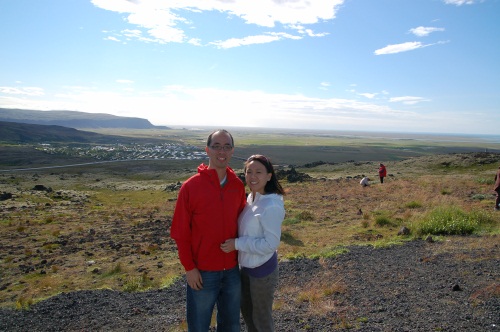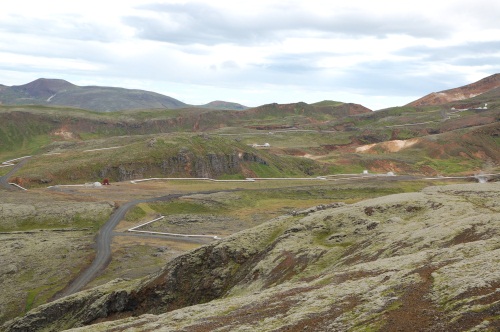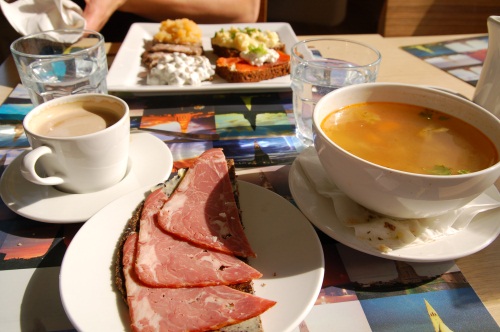Originally I was thinking of not going to Iceland if the timing/itinerary didn’t work out, but not, having gone, I’m glad that we went! Iceland is an interesting place, it has a population of only 300,000 people and is built upon the meeting of the North American and Europe tectonic plates and a bunch of volcanos. That sounds like an inhospitable place (and certainly only 300,000 people chose to live there) but surprisingly, it is quite liveable.

(Houses have aluminum siding)
The road between the airport in Keflavik and Reykjavik (largest city with a population of about 180,000) is completely filled with lava rock on both sides. On the drive in, you would be surprised that anything can grow at all on this island! There are a couple of weeds here and there, but there is no soil for grass, shrubs, or trees. Not to mention that Iceland is sufficiently far enough north that there is hardly any sunlight during the colder months.

(There isn’t lava rock everywhere)
The inability to farm would cause lots of self-sufficiency issues. You would have to import all your fruits and vegetables from Europe – which would make them super expensive. That means not a lot of people would choose to live here, so then there wouldn’t be a market for consumer items (i.e., McDonalds, Starbucks etc). Everything would have to be imported!

(Along the seawall)
As I learned more, that turned out not to be the case. Yes the population is small so things are never “made” for the Iceland market (if you think that Canada had it bad being overwhelmed by USA products, imagine what would happen to a market that is 1% the size of Canada). But Iceland has some amazing advantages.

(Hallgrímskirkja in Reykjavik)
First, the presence of the volcanos provide almost limitless geothermal energy. Their energy costs are super low, and the only energy they need to import is oil (for cars etc). With the cost of energy being so low, they are free to build greenhouses and grow whatever vegetables they need.

(pipeline carrying steam to Reykjavik)
Secondly, the ground is not all arid; there are some agrable land which is used to grow grass that feed sheep and horses. Thus, there is a lot of lamb and horse meat; plus a lot of fishing from the waters surrounding the island. The lack of people makes it less profitable for a big corporation to come in and dominate food preparation, and so I would expect a lot more locally sourced and produced food (although you pay an elevated price for it).

(some typical Icelandic food)
Globalization is happening through the world, but here in Iceland, you have the opposite; a seemingly isolated, but socially advanced culture that works. Impressive and interesting.
 Hi! and welcome to the eclectic personal blog of Kevin Quan. Come in, stay awhile, peek into the nooks & crannies, and learn a bit about me and my interests.
Hi! and welcome to the eclectic personal blog of Kevin Quan. Come in, stay awhile, peek into the nooks & crannies, and learn a bit about me and my interests.